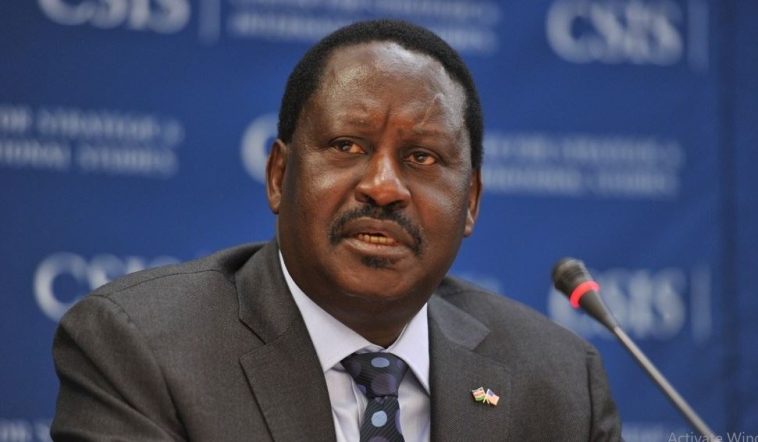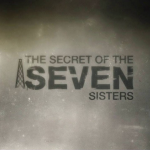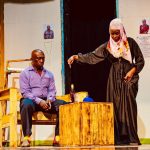When Raila Amolo Odinga drew his last breath on October 15, 2025, Kenya did not just lose a politician, it lost a grandmaster of political chess. For over five decades, Raila moved across Kenya’s political board with the precision of a strategist who understood timing, sacrifice, and positioning. Every alliance, defection, and handshake was a calculated move aimed at advancing the broader struggle for democracy and national renewal. In contrast, Uganda’s opposition remains trapped in a game of Ludo; predictable, impulsive, and emotionally driven.
While Raila mastered the logic of political maneuvering, Uganda’s opposition too often rolls the dice and hopes for luck. His death, therefore, is more than a continental loss, it is a reminder that political success is not about noise or anger, but about mastery, foresight, and discipline. For if Uganda’s opposition truly seeks to understand the anatomy of effective resistance, the discipline of principled politics, and the art of building coalitions without bitterness, it must enroll, at least metaphorically, in The Raila Odinga School of Politics.
Raila’s political life was a study in unpredictability, a master tactician who thrived where others saw checkmate. No matter the odds, he refused to be counted out. Time and again, he executed complex maneuvers at the brink of political collapse, defying expectations and reinventing himself when defeat seemed inevitable. Born into the towering shadow of his father, Jaramogi Oginga Odinga Kenya’s first Vice President, Raila’s political awakening was almost fated. When his father was arrested by Jomo Kenyatta’s government in 1969, the young Odinga was only 25, but the seeds of defiance had already been sown.
In the 1980s, his open challenge to Daniel Arap Moi’s one-party rule led to his own imprisonment without trial. Those dark years in the dungeons of Nyayo House did not break him, they forged him. Out of pain emerged purpose, and Raila became the face of Kenya’s Second Liberation, embodying the resilience and strategic patience of a man who played not for the next move, but for the endgame. When Raila was released in June 1989, his freedom was brief, by July, he was back behind bars, detained once again for demanding the reintroduction of multiparty democracy alongside Kenneth Matiba and Charles Rubia.
By February 1992, Raila re-emerged, joining his father’s Forum for the Restoration of Democracy (FORD), a movement that had become the nucleus of Kenya’s democratic awakening. But like all movements built on fragile alliances, FORD was soon infiltrated and fractured by KANU’s deep-state chess players. When Jaramogi Oginga Odinga died in 1994, the battle for succession within FORD exposed Raila’s political genius. Pitted against seasoned figures like Michael Wamalwa, Paul Muite, James Orengo, Anyang’ Nyong’o, and others dubbed the “Young Turks,” Raila lost the leadership contest but only in the short term.
In a daring gambit, he resigned from FORD–Kenya, relinquished his Lang’ata parliamentary seat, and re-entered through the National Development Party (NDP), reclaiming the same seat with renewed legitimacy. It was a masterstroke that confirmed what many had begun to realize, Raila didn’t play politics; he engineered it.
After contesting the 1997 general election and finishing third, Raila Odinga once again redefined the rules of political survival. He joined forces with Mwai Kibaki, Michael Wamalwa, Charity Ngilu, and others under the National Alliance Party of Kenya (NAK), to challenge Moi’s entrenched regime. When the coalition faltered, Raila executed one of the most audacious moves in East African political history, he dissolved his National Development Party (NDP) into Moi’s ruling KANU, creating what was hailed as “New KANU.” As its Secretary General, Raila sat in the inner sanctum of power alongside George Saitoti, Kalonzo Musyoka, and Musalia Mudavadi, as the old guard plotted Moi’s succession.
But when Moi anointed Uhuru Kenyatta as his chosen heir, Raila refused to be a pawn. In a sweeping act of defiance, he led a mass exodus out of KANU, forming the Liberal Democratic Party (LDP). The next chapter was pure political theatre and strategic brilliance. Raila entered a pact with Simeon Nyachae, then quietly sealed another with Mwai Kibaki. On that fateful day at Uhuru Park, with just two electrifying words “Kibaki Tosha!”, Raila ignited a revolution that collapsed KANU’s 40-year stranglehold and transformed the National Alliance of Kenya into the victorious National Rainbow Coalition (NARC). It was not politics; it was precision warfare, a move only a grandmaster could see five plays ahead.
When the ballots were finally counted, the unthinkable had happened, KANU had fallen, and Kenya had entered a new political dispensation. A fierce internal battle for the newly created position of Prime Minister ensued between George Saitoti and Raila, but when the dust settled, Raila accepted the Ministry of Roads, Public Works and Housing. As he would later remark, “the struggle was not for positions, but to ensure Moi’s era was brought to an end.” Once in power, some within President Kibaki’s circle abandoned the agreements that had birthed the coalition. Betrayal replaced brotherhood, and the unity that had defeated KANU began to crack under the familiar weight of greed and arrogance.
The 2005 Constitutional Referendum became Raila’s rebirth. What began as a mere contest over the Wako Draft Constitution quickly evolved into a referendum on Kibaki’s broken promises and Raila seized the moment with surgical precision. Out of that momentum, the Orange Democratic Movement (ODM) was born, symbolizing the “No” side that had triumphed against the government-backed “Banana” camp. It was not just a political reaction; it was a recalibration of power. Yet, as always, betrayal lurked within the alliance. Uhuru Kenyatta, once aligned with Raila, defected to back Kibaki’s re-election, and Kalonzo Musyoka followed suit, taking with him the legal registration of the ODM–Kenya party.
For most politicians, that would have been checkmate. But Raila, ever the strategist, moved three steps ahead. Through constitutional lawyer Mugambi Imanyara, he secured the registration of the original Orange Democratic Movement (ODM) name and structure, reclaiming both the brand and the narrative. In one quiet legal stroke, he transformed vulnerability into dominance, emerging not as the man betrayed, but as the architect of a political juggernaut.
In the early count of 2007 election, Raila held a commanding lead, only for the process to collapse into chaos: lights went out, independent broadcasters were silenced, and the chairman of the Electoral Commission, Sam Kivuitu, was escorted to State House, where Chief Justice Evans Gicheru awaited to preside over an unprecedented swearing-in ceremony. Supporters of Raila, gathered at his iconic Pentagon House, were stunned. Some collapsed at the news of the results. Across the country, protests erupted, spiraling into violence that claimed over a thousand lives. While lesser politicians might have succumbed to despair, Raila turned crisis into negotiation.
Through painstaking dialogue facilitated by the African Union, he brokered the historic “handshake” agreement, se curing the position of Prime Minister. Once again, he demonstrated that true statesmanship lies not in reacting to chaos, but in strategically shaping it to restore order and protect the people. The formation of the grand coalition government following the 2007 crisis paved the way for one of Kenya’s most transformative legal achievements: the promulgation of the 2010 Constitution. By the 2013 elections, forces intent on dismantling the Orange Democratic Movement (ODM) had begun to bear fruit.
The Pentagon House, Raila’s political nerve center, had been neutralized; key allies, including William Ruto, Charity Ngilu, and Najib Balala, defected to join Uhuru Kenyatta in forming the Jubilee Alliance. Unfazed, Raila recalibrated, forging the CORD Coalition with Kalonzo Musyoka and Moses Wetang’ula, proving that even when the board seemed cleared of pieces, he could reassemble a formidable force. His ability to rebuild, adapt, and maintain momentum despite betrayal, defections, and systemic pressure underscored the fundamental lesson: opposition is not merely a reaction; it is a disciplined strategy executed under extreme adversity.
In the 2013 elections, Raila Odinga was narrowly defeated, and the Supreme Court upheld Uhuru Kenyatta’s victory. Yet defeat did not silence him; he immediately pivoted to a strategy of principled oversight, holding the Jubilee government accountable for corruption, mismanagement, and wasteful expenditure. By 2017, Raila had consolidated his influence, forming the NASA Coalition to challenge Kenyatta once more. When the initial results again declared Uhuru the winner, the coalition invoked the courts, resulting in the historic annulment by the Maraga-led Supreme Court, the first such decision in Africa.
Raila’s response to this volatile moment was strategic rather than impulsive. Declaring himself the People’s President, he orchestrated nationwide demonstrations and an economic boycott, not as an exercise in chaos, but as calibrated pressure aimed at forcing reforms and negotiations. Once more, he demonstrated the core lesson of his political genius: opposition is effective not through spectacle alone, but through disciplined, principled, and tactical engagement even under extreme pressure. Odinga’s political journey culminated in a masterstroke of statesmanship: the historic handshake with Uhuru Kenyatta, a symbolic act of reconciliation that sought to heal a divided nation.
In 2022, when Raila contested the presidency against Ruto, the outcome was once again unfavorable, sparking demonstrations fueled by rising living costs and allegations of corruption. Even as Gen Z activists mobilized protests and Ruto reshuffled his cabinet, Raila maintained his strategic composure. Recognizing the imperatives of unity over vengeance, his ODM joined hands with Ruto’s UDA, forming what has been widely hailed as a broad-based government, a pragmatic coalition designed to stabilize the country while keeping the door open for future democratic contests.
Uganda’s opposition today presents a stark contrast to the disciplined, strategic, and patient politics exemplified by Raila Odinga. Rather than valuing principle and long-term strategy, dissenting voices within the opposition are often marginalized, while loyalty is prized above competence. Elites, those with vision, experience, and the ability to shape policy are treated as threats, pushed aside or vilified because they might outshine the current leadership. This fear of internal challenge stifles innovation and prevents the formation of a robust, ideologically coherent movement capable of sustaining influence between elections.
Decision-making within Uganda’s opposition is frequently reactive, dictated less by principle than by the whims, moods, or pressures of their supporters. The opposition while initially successful at mobilizing youth energy and creating electoral excitement, they often struggle to convert popular enthusiasm into sustained political influence. Parliamentary seats are now treated as rewards for popularity or celebrity rather than capacity and expertise. Musicians, celebrities, and social media influencers have been catapulted into parliament, not because they are strategic thinkers, but because they command attention. The result is a politics of optics over substance, where winning elections is an end in itself rather than a stepping stone toward meaningful governance and reform.
Unlike Raila, Uganda’s opposition exhibits a troubling pattern of short-termism and passivity. Once elections conclude, they retreat, folding its strategy and waiting for the next electoral cycle rather than consolidating gains or deepening influence. Uganda’s opposition remains reactive, unprincipled, and disorganized. Its inability to cultivate a resilient, strategic, and inclusive approach leaves it ill-prepared to challenge entrenched power effectively
Raila Odinga’s life is a testimony politics is not a game of chance but a disciplined craft honed through struggle, sacrifice, and vision. He turned betrayal into opportunity, chaos into negotiation, and fleeting victories into enduring legacies. Meanwhile, Uganda’s opposition continues to roll dice, cheer at lucky breaks, and celebrate musical chairs as strategy. They bicker over titles, scorn competence, and elevate popularity over principle, as if politics were a talent show rather than a serious struggle for national change. One can almost hear Raila laughing from across the border, proof that politics, when practiced with vision and discipline, is an art, not a game, and a harsh reminder to Uganda’s leaders that reactionary politics is politics dead on arrival.
This post was created with our nice and easy submission form. Create your post!






